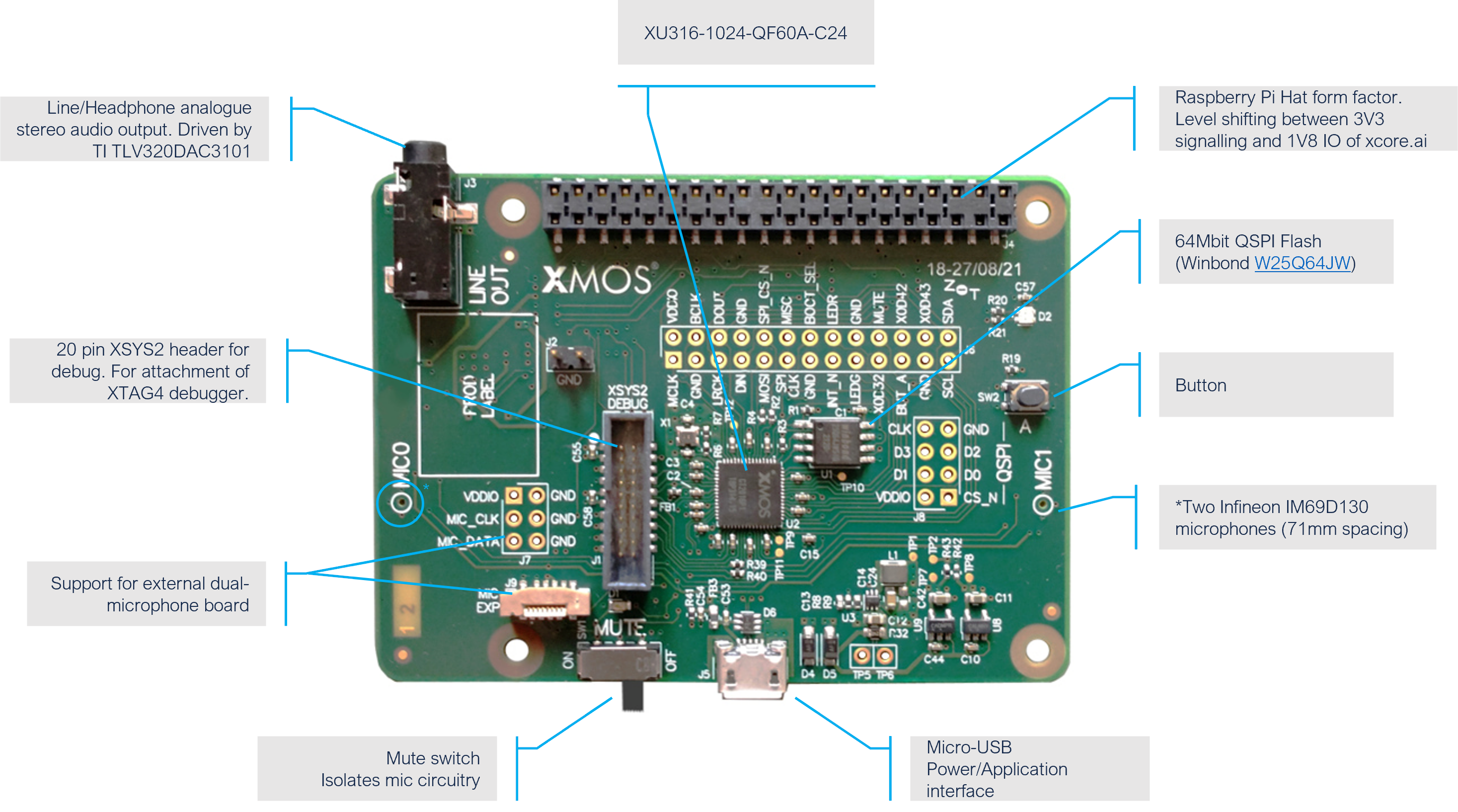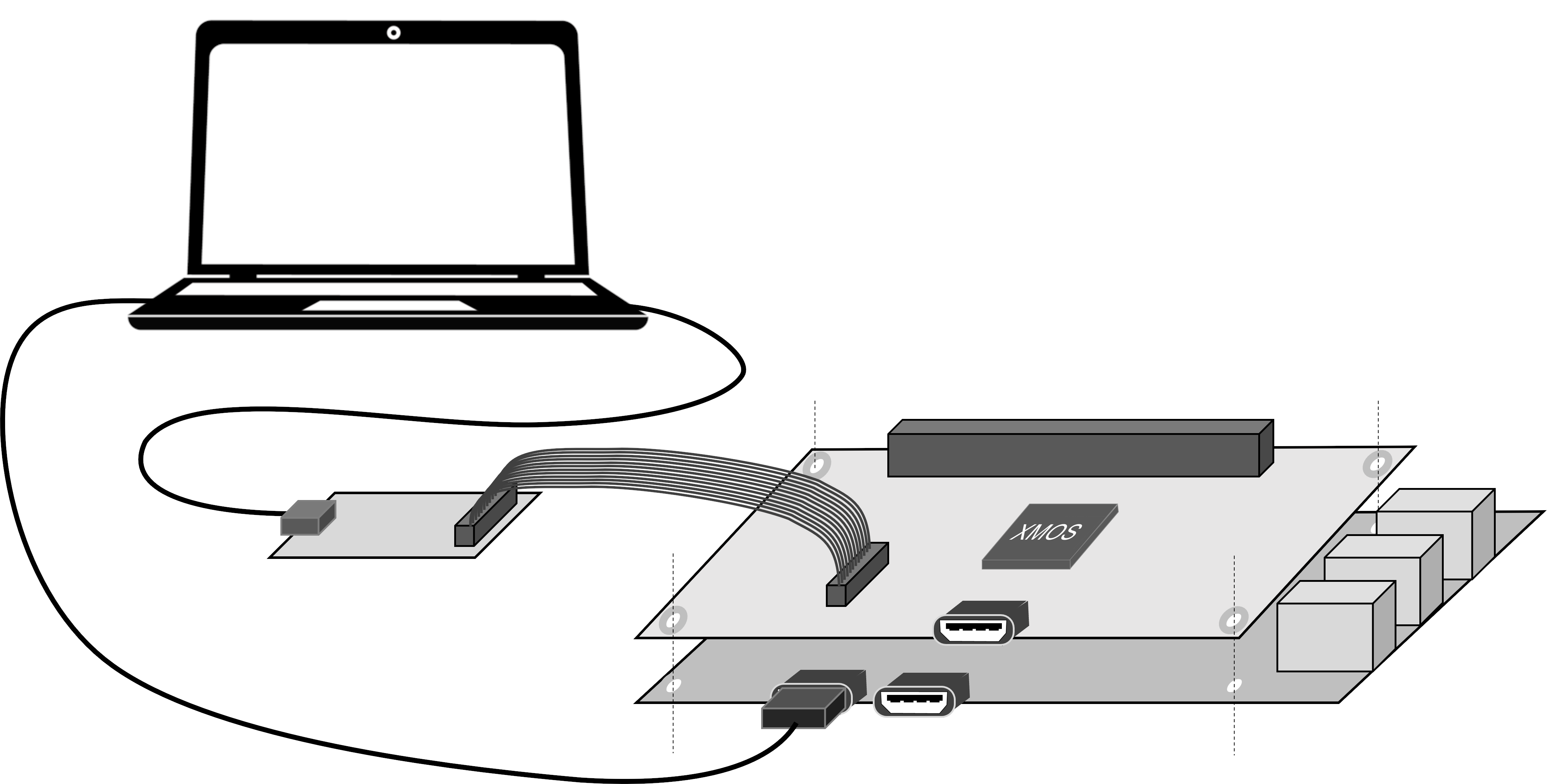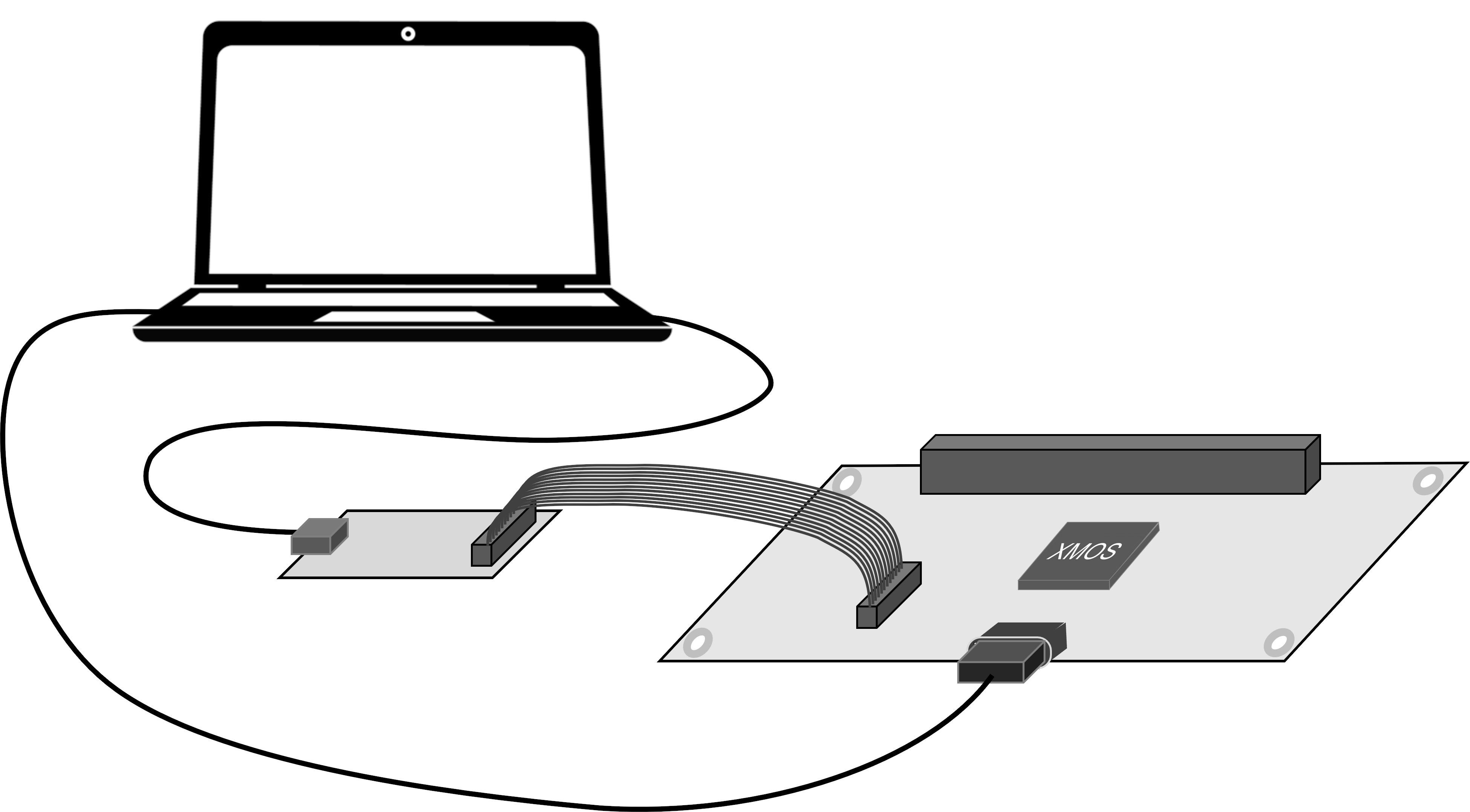Overview#
Based on XMOS’s XU316 cross-over processor, the XK-VOICE-L71 development board supports a wide range of application development and prototyping, including:

Fig. 1 XK-VOICE-L71 Development Board#
Example applications#
XMOS provide multiple examples and pre-built binaries which target the XK-VOICE-L71 development kit:
Features#
XU316-1024-QF60A-C24 device. (1.8V IO).
Two Infineon IM69D130 microphones (71mm spacing).
External microphone expansion connector. (Allows connecting existing microphone array boards).
20 pin XSYS2 header for debug. For attachment of XTAG4 debugger.
64Mbit QSPI Flash (Winbond W25Q64JW).
Hardware mute circuit as required by AVS.
Raspberry Pi Hat compatible form factor.
Level shifting between Rasb Pi 3V3 signalling and 1V8 IO of xcore.ai.
I2C GPIO Expander for interface of low speed control signals from pi.
Line/Headphone analogue stereo audio output. Driven by TI TLV320DAC3101. Required for generating a good quality audio output from the Pi. Can be driven from xcore.ai also for USB only demo.
One Red/Green bi-colour LED.
One tactile pushbutton switch.
Powered by Raspberry Pi or USB.
77x56.5mm in size.
About this development kit version#
Development kit part number: XK-VOICE-L71
Latest revision: 1V0-A
Order from: Digikey
Setting up your development kit#
The XK-VOICE-L71 is designed to provide a very flexible development kit. The diagram below provides a basic introduction to he connectivity of the system. The XK-VOICE-L71 can be used as a stand-alone USB device, or as a Raspberry Pi hat, which provides simple access to SPI, I2S and I2C connections.

Fig. 2 XK-VOICE-L71 Development board block diagram#
Basic programming setup#
Details of how to setup your development kit vary between example applications, and will be documented with that example. However, an important reminder when setting up the kit is to ensure that the necessary power supplies are provided during programming.
When using your XK-VOICE-L71 development board as a Raspberry Pi hat, the Raspberry Pi provides power to the XK-VOICE-L71:

Fig. 3 XK-VOICE-L71 Development board as a RaPi Hat#
When using your XK-VOICE-L71 development board as a USB device:

Fig. 4 XK-VOICE-L71 Development board as a USB accessory#
Boot control#
The XK-VOICE-L71 supports two boot modes. The default behaviour is to boot over QSPI from the Flash memory device on the development kit. Alternatively, the XK-VOICE-L71 can be booted over SPI. To boot from SPI, the host (e.g., the Raspberry Pi) is required to set the xcore devices “Boot Select” over I2C and then trigger a reset, also over I2C. When the xcore exits reset, it will subsequently boot from SPI, provided by the host.
DAC setup#
It should be noted that the DAC fitted to the XK-VOICE-L71 requires configuring at run time. This is accomplished over I2C, which can be done by the host (e.g., the Raspberry Pi) or by the xcore itself.